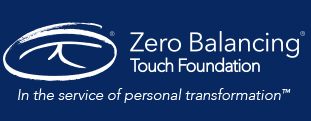Abstract
Background: Anxiety disorders are among the most pervasive mental health challenges worldwide, affecting individuals across all demographics and socioeconomic backgrounds. As a leading contributor to disability and diminished quality of life, anxiety continues to rise in prevalence, exacerbated by global crises and societal stressors. This study explored how Zero Balancing (ZB) supports individuals with anxiety. Researchers hypothesized that ZB would lower the perceived severity of general anxiety and reduce perceived anxiety symptoms.
Methods: A concurrent mixed-methods phenomenological research design was utilized to honor the holistic nature of bodywork and explore participants' lived experiences. This national study involved 320 ZB sessions facilitated by 12 certified ZB practitioners trained in research methods. Each participant received one ZB session weekly for four weeks, ensuring consistency by working exclusively with the same practitioner. Anxiety levels and symptoms were gathered via pre/post-session Hamilton Anxiety Rating Scale (HAM-A) and General Anxiety Disorder-7 item Scale (GAD-7). Face-to-face, semi-guided, video-recorded interviews were conducted at the end of the series. The quantitative aspect included pre/post assessments reported with descriptive statistics and a paired samples t-test (one-tail). Qualitative data was assessed for themes.
Results: The t-tests (one-tailed) for generalized anxiety severity (M=5.8, SD=0.462, N=80) was significant (p
Conclusions: Zero Balancing effectively reduced anxiety severity and symptoms, highlighting the critical role of somatic awareness in anxiety management.
Artificial Intelligence (AI) Usage
no
Recommended Citation
Rhoads, M., Murphy, M., Behrens, M. L., Salvo, R., Anderson, S., Gowen, C., Humbles, D., Quarry, V., Rosene, D., Tribelhorn, W., Urcheck, J., & Waggy, D. (2025). Grounded in Touch: The Science Behind Anxiety Relief and Human Connection. Journal of Transformative Touch, 4(1). https://doi.org/10.58188/2767-7176.1047
Creative Commons License

This work is licensed under a Creative Commons Attribution-Noncommercial-No Derivative Works 4.0 License.
Included in
Alternative and Complementary Medicine Commons, Community Health Commons, Public Health Commons, Social and Behavioral Sciences Commons


